




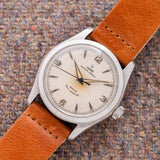


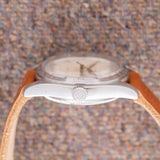
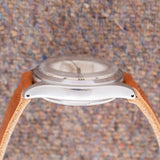
1952 Tudor Oyster Prince British North Greenland Expedition (Ref. 7808)
- Worth A Read
- Specifications
The Tudor Oyster Prince was introduced in 1952 as a rugged watch designed for the British North Greenland Expedition (BNGE). Hans Wilsdorf, head of Rolex, wanted to test the watches' performance and promote them. Each BNGE member received a new Oyster Prince with the request to provide feedback on their performance. The men kept logbooks of their watches' accuracy against daily time signals broadcast by the BBC. These logbooks were given to Tudor following the expedition and used it to great effect in its advertising, touting its durability under harsh conditions.
The Oyster Prince was a small, unassuming watch with no date, arrow hands, and a white dial with the Tudor rose logo at 12 o'clock and applied markers. It was built for utility with little ornamental flourish, with thick pierced lugs and a screw-down crown. Inside was a self-winding FEF caliber 390, modified by Tudor from a Fabrique d’Ebauches de Fleurier movement blank. The men of the BNGE wore the watches on extra-long leather straps for use over their cold weather clothing.
Captain J.D. Walker of the Royal Engineers wrote to Tudor when he returned to England, expressing his admiration for the Rolex Tudor Oyster Prince which he wore on his wrist throughout his tour with the Expedition. Broadcast signals from the BBC were used to verify the accuracy of the Oyster Prince watches.
Staff Sergeant Desmond "Roy" Homard, a mechanic by training, joined the BNGE in 1953 for its second year, leaving his wife Enid behind in the U.K. When he left for the Antarctic expedition in 1956, Homard left behind his Oyster Prince, which Enid claimed for her wrist.
Model: Oyster Prince
Movement: Automatic
Year: 1952
Contents: Watch only
Case: The size is 34mm with a classic oyster case.
Dial: A warm white dial with baton markers. The dial is toasty near the center. This is also the same configuration as the examples used during the BNGE, which was from 1952 to 1954.
Strap & Buckle: Aftermarket strap and buckle.
1952 Tudor Oyster Prince British North Greenland Expedition (Ref. 7808)
Authenticity Guaranteed
All our watches are carefully inspected to insure and guarantee the authenticity.
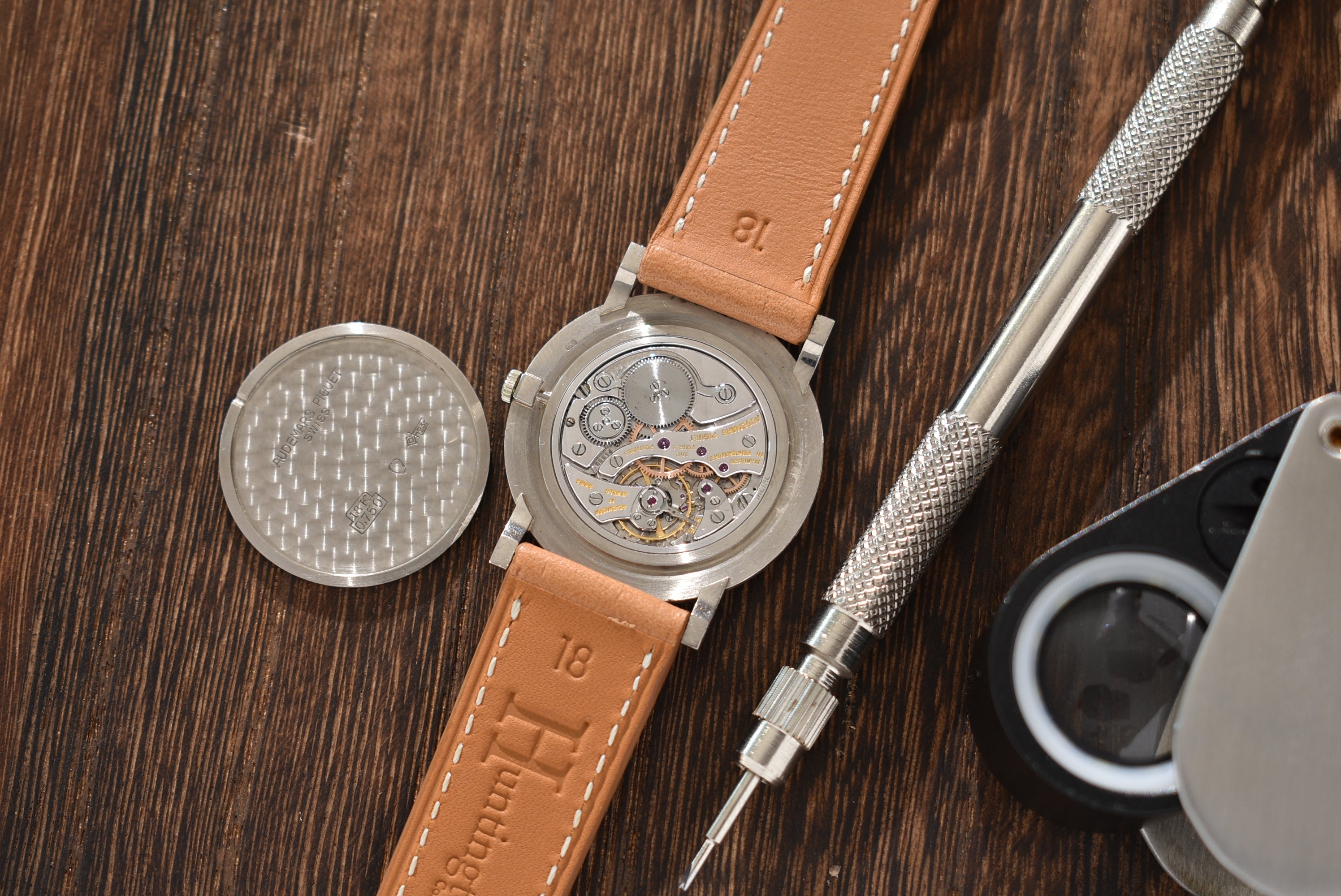
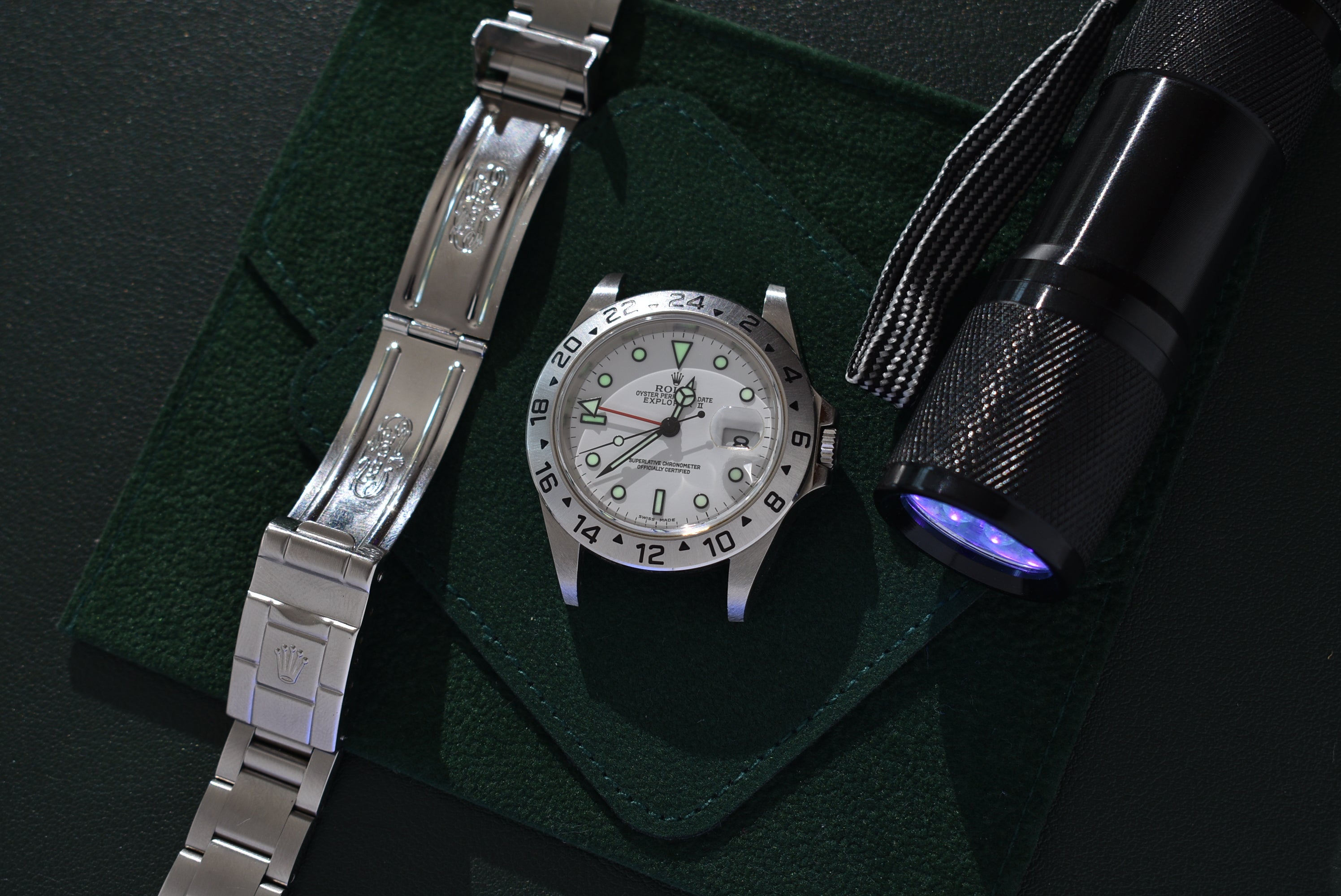
The Details
All our watches are scrutinized during inspection to make sure our descriptions are as accurate as possible.
- Related products
- Recently viewed
Cart
No more products available for purchase
Your Cart is Empty
Pair with
- Worth A Read
- Specifications
The Tudor Oyster Prince was introduced in 1952 as a rugged watch designed for the British North Greenland Expedition (BNGE). Hans Wilsdorf, head of Rolex, wanted to test the watches' performance and promote them. Each BNGE member received a new Oyster Prince with the request to provide feedback on their performance. The men kept logbooks of their watches' accuracy against daily time signals broadcast by the BBC. These logbooks were given to Tudor following the expedition and used it to great effect in its advertising, touting its durability under harsh conditions.
The Oyster Prince was a small, unassuming watch with no date, arrow hands, and a white dial with the Tudor rose logo at 12 o'clock and applied markers. It was built for utility with little ornamental flourish, with thick pierced lugs and a screw-down crown. Inside was a self-winding FEF caliber 390, modified by Tudor from a Fabrique d’Ebauches de Fleurier movement blank. The men of the BNGE wore the watches on extra-long leather straps for use over their cold weather clothing.
Captain J.D. Walker of the Royal Engineers wrote to Tudor when he returned to England, expressing his admiration for the Rolex Tudor Oyster Prince which he wore on his wrist throughout his tour with the Expedition. Broadcast signals from the BBC were used to verify the accuracy of the Oyster Prince watches.
Staff Sergeant Desmond "Roy" Homard, a mechanic by training, joined the BNGE in 1953 for its second year, leaving his wife Enid behind in the U.K. When he left for the Antarctic expedition in 1956, Homard left behind his Oyster Prince, which Enid claimed for her wrist.
Model: Oyster Prince
Movement: Automatic
Year: 1952
Contents: Watch only
Case: The size is 34mm with a classic oyster case.
Dial: A warm white dial with baton markers. The dial is toasty near the center. This is also the same configuration as the examples used during the BNGE, which was from 1952 to 1954.
Strap & Buckle: Aftermarket strap and buckle.
